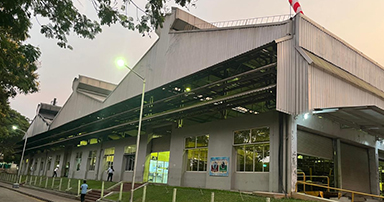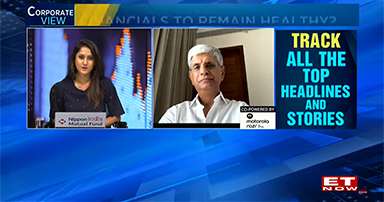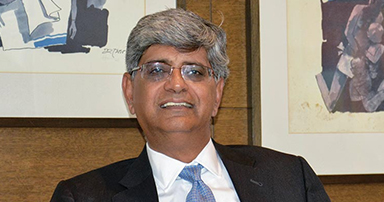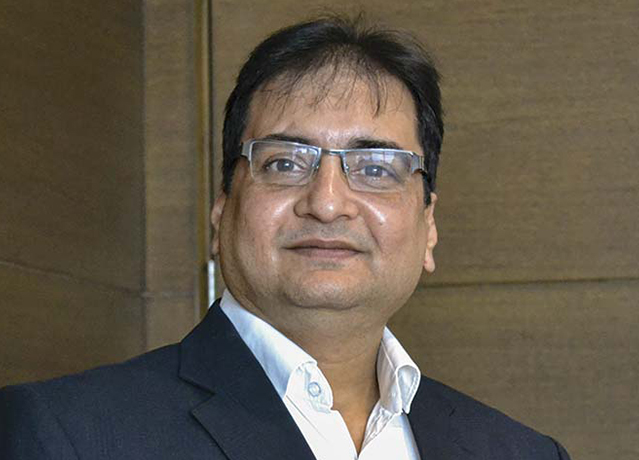
Over the years, Sandhar Technologies has been consistently focussing on passive safety and is now keen to foray into the active safety space. Auto Tech Review caught up with Arvind Joshi, Whole-Time Director (Finance & Procurement), Chief Financial Officer & Company Secretary, Sandhar Technologies, to understand about its offerings in areas of automotive safety and security systems.
Arvind Joshi serves as the Whole-Time Director at Sandhar Technologies Ltd. Joshi was first appointed as the CFO and Company Secretary in December 2006 and assumed the current role of Director on May 31, 2013. He holds a Bachelors’ degree in science from the University of Calcutta, in addition to his Bachelors’ degree in law from the University of Delhi. Joshi is an Associate Member of the Institute of Chartered Accountants of India as well as the Institute of Company Secretaries of India. He has over 26 years of experience in managing corporate finance, legal and commercial functions across diverse businesses and companies in India and overseas.
ATR _ Can you elaborate on how Sandhar is focussing on raising the innovation bar, considering it is the most important must-have in the ever-evolving automotive space?
Arvind Joshi _ Sandhar had set up its R&D centre in 2013 to support OEMs in their product development activities, right from designing, conceptualisation to product offering. Our focus was not to get into any hard core R&D, but more of applications of the various products. We focussed on Sandhar’s growth strategy that would catapult us into futuristic product range as well as help us maintain leadership position in existing product range. We supplement our own R&D by working closely with global leaders in specific technologies via joint ventures and technical collaborations.
With all the industry talk centred around EVs, connected vehicles, improved emission norms and BS VI implementation, there will be huge opportunities in auto electronics as well as components that help reduce emissions. Our technology platforms are mainly creating child components for the end product. Sandhar aspires to be part of the value chain in a complete form, where there is a critical component or sub-component requirement and we source it from our own internal captive unit.
What role is Sandhar going to play in the connected technology journey?
Connectivity hinges around several aspects – connectivity with regards to safety, entertainment and also how the passenger-vehicle communication or vehicle-to-vehicle communication increases and becomes effective. As you see in advanced driver assistance systems (ADAS), connectivity is all around a vehicle – a vehicle talks to the other vehicle and ensures safety so that they do not crash with each other.
Connectivity also pertains to passenger comfort. Large TFT displays in some of the luxury cars offer information on the outside temperature, humidity as well as the ambience – all these enhance passenger comfort. A typical luxury car already has more than 25 types of sensors to cater to safety, comfort, entertainment and emissions norm needs. With the increased usage of software applications, the vehicle would start “talking” with the drivers as it commences display of the effectiveness of these to the driver – for example, Rear Object Monitor CCD Camera or a Night-time Pedestrian Warning IR Sensor or Drowsiness Sensors, all of whom were non-existent till a few years ago.
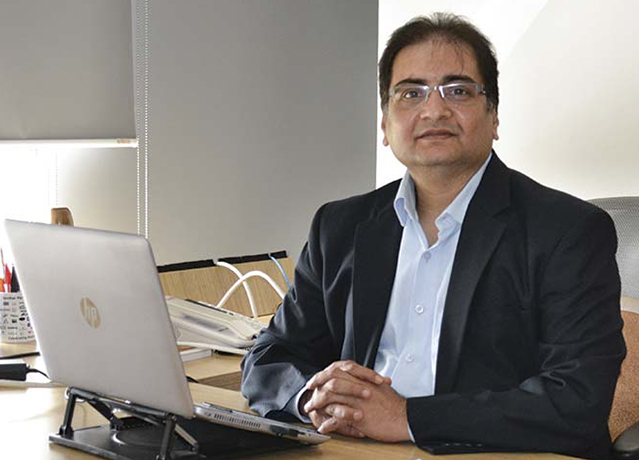
The automotive industry is looking to embrace Industry 4.0 – what is Sandhar’s approach towards Industry 4.0?
Sandhar is one of the frontrunners in implementation of Industry 4.0. We have always embraced technology, be it in respect of our enterprise resource planning (ERP) or in terms of diversified technology platforms for manufacturing our wide range and category of products. Our ERP not only caters to generation of financial management information systems, but helps manage and provide insights on man, machine, material, etc. We are one of the first automotive component manufacturers to have embraced ERP on human capital management and asset capital management. We have enterprise asset management system in place – our procurement is all online and ERP-based. From the shop floor to the Board room, the information flow is virtually seamless.
A smart manufacturing 4.0 provides real time information from the shop floor, which was not facilitated via the ERP mechanism. Smart manufacturing has two components – collating data and data analytics. Our focus now is to get the right data that ensures data integrity, and once data integrity is ensured, in terms of it being complete and accurate, we will move into the next stage of data analytics. Industry 4.0 would help us in continuity of business, gain insights and enhance employee productivity. In a competitive marketplace, no company will be able to survive if it does not have the right information available to it in a right manner.
Sandhar has formed several joint ventures over the years. How crucial is collaboration in the automotive industry?
Sandhar believes collaboration is the way forward for any automotive component player because the number of products and components that go into a mobility segment are huge and not everyone can be an expert or specialised in a particular technology. Collaboration is all about building technological capabilities, competencies as well as offering a certain amount of comfort to global OEMs, who have set up their footprint in India, as we have the engineering capabilities to manufacture and help them, in terms of indigenisation or localisation.
We look at collaboration from a perspective of helping us in our strategic growth. While many companies have accorded high focus on M&A, we believe collaborations are equally important. First, you don’t get good targets that are for sale; secondly, you always have limitations to build these technologies and thirdly, buying a technology from outside and playing around it into India is tough.
What will be your focus areas in terms of passive and active safety?
Sandhar will continue to focus on the passive safety space going forward, but we are excited about foraying into the active safety and security sub-segment, as it offers a huge opportunity. The Indian auto component manufacturing is mostly driven by OEMs and that puts certain limitations on component manufacturers’ own offerings as the components need to be homogenised with the vehicles themselves. However, with product innovations and enhanced R&D capabilities, Sandhar is focussing on being one of the frontrunners of manufacturing components that would take us forward.
Give us an insight into Sandhar’s product offerings in the passive safety space?
Sandhar has formed a JV with Taiwan-based Whetron – to be called Sandhar-Whetron – in the passive safety space, which is awaiting government approval. This JV will focus on manufacturing parking sensors, park assist cameras, door alert systems, lane changing systems for four-wheelers and tyre pressure monitoring systems for two-wheelers. With its latest JV with Winnercom, a South Korea based-company, Sandhar would be in a position to enter the connected vehicles category with antenna systems. Our in-house capabilities developed in technical collaboration with one of our joint venture partners – for example, Jinyoung – has helped us develop world-class automotive relays, which are an important component of the vehicles electrification system. The whole idea is to enrich, enhance and consolidate the business and make it more contemporary to the needs of the industry rather than take giant leaps in futuristic technology.
How are you looking to address road safety through your products?
Road safety is not just about adopting corrective infrastructure measures, but also as much to do with the behavioural aspect of the vehicle and road users. Crossing roads other than at places earmarked, driving at high speed, not wearing helmets, non-accepting road traffic rules are some aspects that create road safety issues. Realising the criticality of the issue, the central government in conjunction with the Indian automotive industry prepared the draft of the Automotive Mission Plan 2026 that lists out safer mobility as one of its focus areas. While it is incumbent upon the government to create the right infrastructure and atmosphere for road safety, it is equally important for road users to support the government and adhere to road safety norms.
Sandhar initially focussed on sheet metal components and subsequently commenced manufacturing components that were catering to safety and security sub-systems. While the automotive component industry is traditionally dissected based on the function of the components they manufacture – such as an engine component manufacturer or a suspension/transmission component manufacturer – Sandhar focussed on components related to passive safety and security sub-segment of a vehicle. By leveraging diversified technology platforms, encompassing sheet metal, die casting, moulding, etc., we have created a universe of product components that in some form or the other, whether directly or indirectly, can be classified in that category.
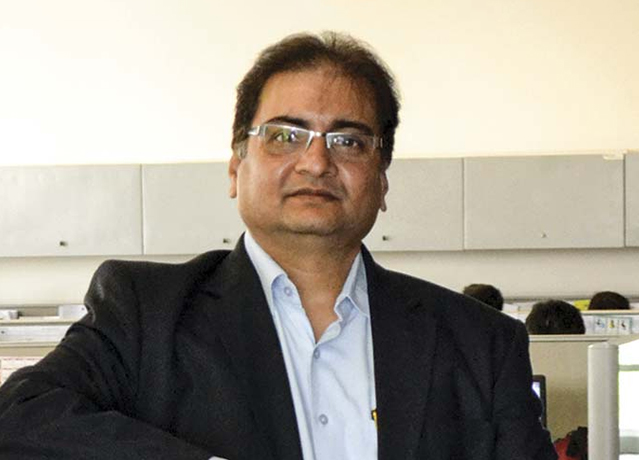
The automotive industry is going through a challenging phase. What’s your perspective?
There are many disruptive changes taking place and the end consumer is a bit confused – there is a switch to BS VI by April 2020, and then there are talks of embracing electric vehicles. This has only added on to the already confused mind whether to buy a petrol vehicle or a diesel vehicle. Consumers buy vehicles as a means of fulfilling their aspirations also. And no one wants to invest their hard-earned money in a vehicle, which suddenly turns outdated or redundant in terms of technology or government regulatory norms. With so many variables to deal with, the best thing for an end consumer is to hold-off buying decisions for now. Having said that, we believe the automotive industry will be back on track from the second quarter onwards.
Is Sandhar looking to get into the electric mobility space?
Sandhar is not doing anything specific for electric vehicles for now, but we are open about getting into this space in future depending on the way the market responds to EVs. My take is that EVs will be launched much earlier than it has been widely anticipated. OEMs were in denial mode over the success of EVs, but because of the persistence and consistency at the government level every automotive player has realised that they will be left out of the huge Indian market, if they do not undertake efforts to be part of the EV ecosystem. What is heartening is that the industry lobby groups are pushing the government to work proactively for EV charging infrastructure. All these measures indicate there is lot of two-way communication between the industry and the government that bodes well for the future. We believe EVs should prominently feature on Indian roads over the next five to six years.
To follow the story click here..
https://autotechreview.com/conversations/interviews/collaboration-is-the-way-forward-for-any-automotive-component-player
